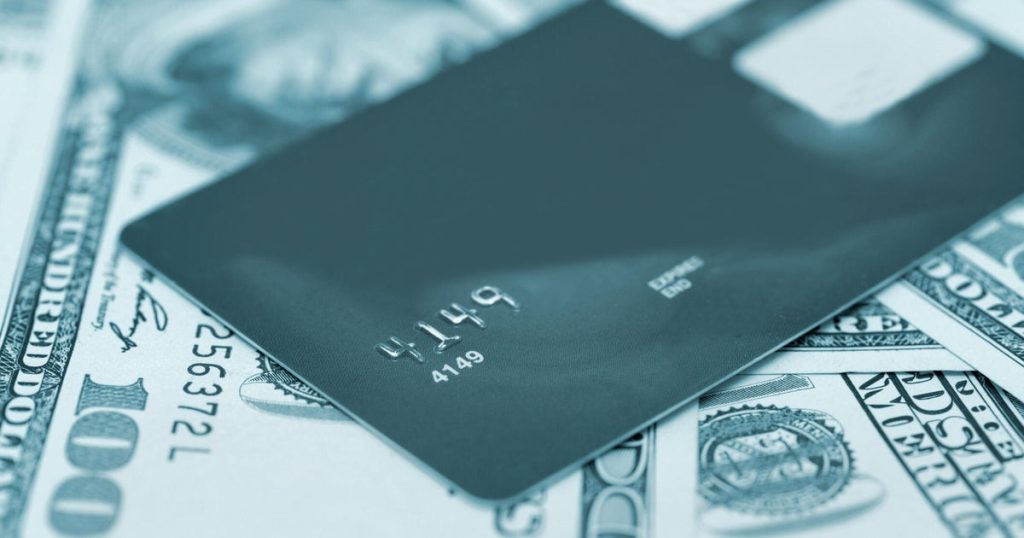Zoonar RF/Getty Images
The average American household now carries nearly $8,000 in credit card debt, but for many struggling borrowers, that average figure represents just the tip of the iceberg. With credit card interest rates hovering near their highest levels in decades — many cards now charge rates of 21% or more — even moderate balances can quickly balloon into overwhelming financial burdens. For those facing severe debt challenges, balances of $75,000 or higher aren’t uncommon, particularly when medical emergencies, job loss or other financial shocks compound on top of existing obligations.
When you’re staring down a debt load that large, the mathematics become particularly brutal. A $75,000 credit card balance at today’s average rate would require thousands in monthly payments just to stay ahead of the interest charges, but even aggressive payments on a balance that high can leave you feeling like you’re not making much headway. This is exactly the scenario where debt forgiveness can make sense, as the goal is to negotiate significant reductions in what you actually owe.
But how much relief can debt forgiveness really provide right now on a $75,000 balance? Below, we’ll explore what the numbers could break down to if you’re facing a debt balance that high.
Find out how to start the debt forgiveness process today.
Here’s how much debt forgiveness could lower a $75,000 debt now
When people talk about debt forgiveness in the context of credit cards, they’re usually referring to debt settlement. When you pursue this type of settlement, either you or a debt relief company working on your behalf negotiates with your creditor to accept less than the full balance owed. In exchange, you make a lump-sum payment or follow a short repayment schedule. Credit card companies may be open to this arrangement if they believe it’s the most realistic way to recover some of what you owe.
The typical savings range is significant. Many borrowers see reductions of 30% to 50% of their outstanding balances. On a $75,000 debt, that could mean the difference between a crushing debt load and something that feels at least within reach. Here’s what those numbers look like in practice:
- A 30% reduction: You’d pay about $52,500 instead of $75,000
- A 40% reduction: Your total drops to $45,000 instead of the full $75,000
- A 50% reduction: You’d settle the account for $37,500 instead of paying the full balance
To put the impact in perspective, think about what happens if you try to pay down a $75,000 balance the traditional way. At an average credit card interest rate of about 22%, even making a $1,500 payment each month barely dents the principal. Here’s what those numbers look like:
- After 12 months: You’ve paid $18,000 but have only shaved off less than $2,000 from your balance.
- After five years, you’ll have shelled out roughly $90,000, yet you’d still owe over $61,000.
- At that pace, it could take well over a decade to become debt-free and cost more than $130,000 in interest on top of your original balance.
Compared to that, cutting 30% to 50% of your debt through settlement can be a game-changer. It doesn’t erase all the challenges — you’ll need cash upfront, and your credit may take a hit — but it can put freedom from debt much closer.
Learn more about how much you could save by settling your debt for less.
Are other debt relief strategies worth pursuing now?
Debt forgiveness is one solution you have in this scenario, but it isn’t the only way to tackle $75,000 in credit card debt. Depending on your credit score, income and goals, these alternatives may also be worth exploring:
Debt consolidation
With a good credit profile, you may qualify for a debt consolidation loan with a lower interest rate than your credit cards. By consolidating $75,000 into one loan, you could cut interest costs and replace multiple payments with just one.
Balance transfer cards
If you qualify, a balance transfer card offering 0% interest for 12 to 21 months could give you time to aggressively pay down principal without interest piling up. However, moving $75,000 may require multiple balance transfer cards and strong credit.
Debt management plans
Credit counseling agencies can create structured repayment plans with reduced interest rates. While you’ll still pay back the full $75,000, lower rates and fees, coupled with predictable payments, can make the process much more manageable.
Bankruptcy
For borrowers with overwhelming debts and limited repayment ability, filing for bankruptcy may offer a clean slate. While it has long-term credit consequences, it can eliminate unsecured debts like credit card balances entirely.
The bottom line
Credit card debt forgiveness through settlement can dramatically reduce a $75,000 balance, sometimes by tens of thousands of dollars. But it isn’t guaranteed, and it comes with trade-offs, including credit score impacts and the need for upfront cash.
That’s why it’s worth comparing all your options, from debt consolidation and debt management to bankruptcy, before committing to a path forward. If you’re struggling under the weight of high-rate credit card debt, getting professional guidance can help you decide which approach offers the most realistic relief for your situation.

